Denver’s voter-centric elections system makes participating in democracy easy
My painless primary voting experience.
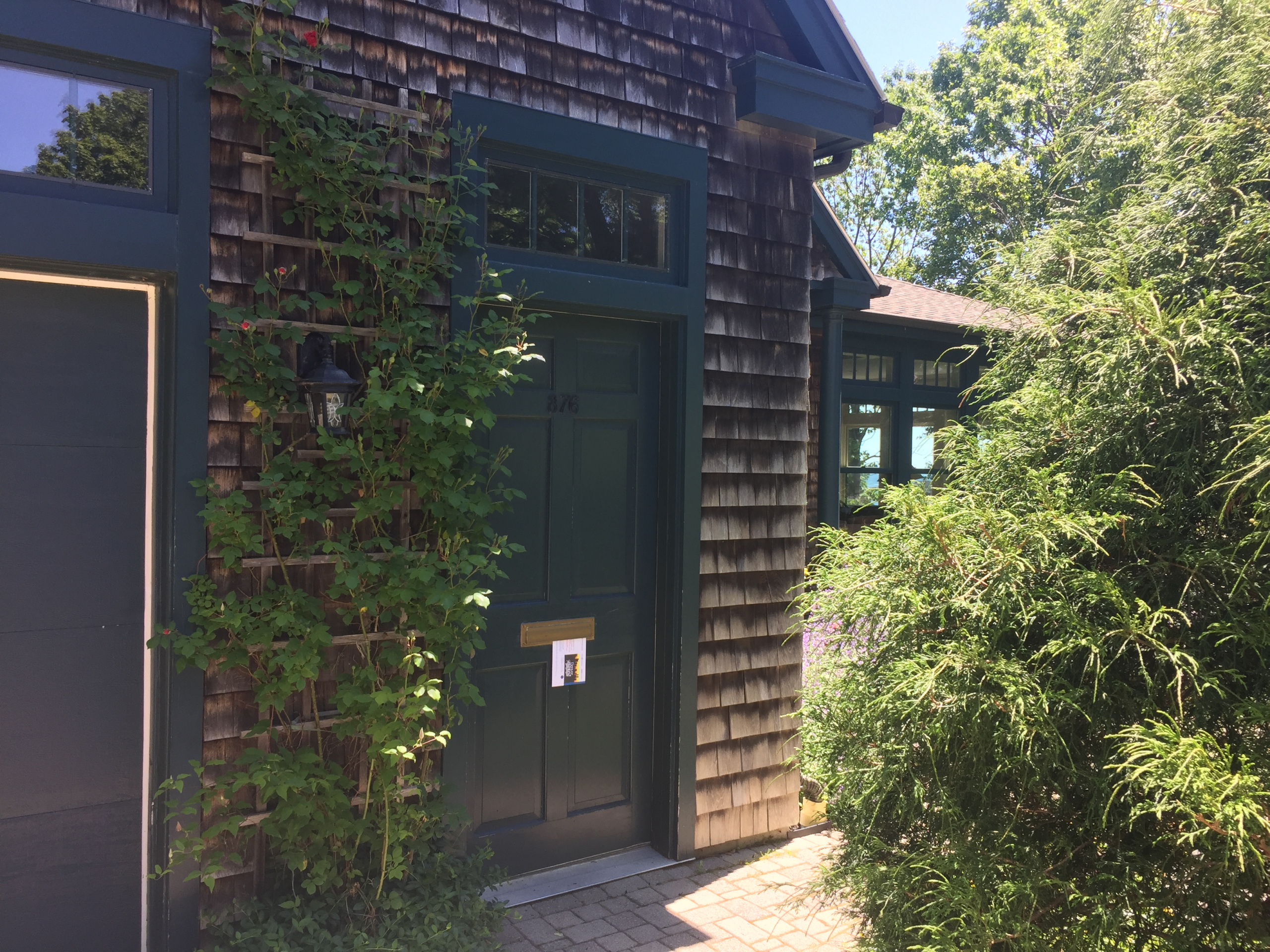
I’ve lived in Denver for over four years now. Every time an election comes around, I’m reminded how easy it is to vote here, and wonder why it isn’t at least this easy everywhere. My recent painless experience voting in Colorado’s primary from Maine made that even more clear. Excellent communication and a voter-centric system can make voting, even in tricky situations, a breeze.
Colorado’s primary election is on Tuesday, June 30. But I unexpectedly went to Maine to visit my family on June 6, and am staying until early July. A few days after I arrived in Maine, I realized that I wasn’t going to be in the state for the election, meaning I wouldn’t receive my ballot at my apartment address as usual.
I began to wonder whether by traveling out of state for the election I had unintentionally disenfranchised myself. I thought that would be ironic, given the fact that I’ve been working for the last several months on U.S. PIRG’s campaign to make sure it’s easier for everyone to vote during the coronavirus (COVID-19) pandemic.
So I called up Denver’s election office to see if and how I could still vote in the primary, despite being thousands of miles away. After being on hold for a short time, an elections worker told me that I needed to change my “mailing address” on my voter registration, and then a ballot would be sent to that address.
I immediately went online and changed my mailing address on my voter registration to the Maine address. But I was still worried, since ballots had already been mailed out. I wasn’t sure if they would mail me a new one if they had just sent a ballot to my Denver apartment. I tried a new method of communication with Denver’s election office, texting them with that very question. They responded within the hour.
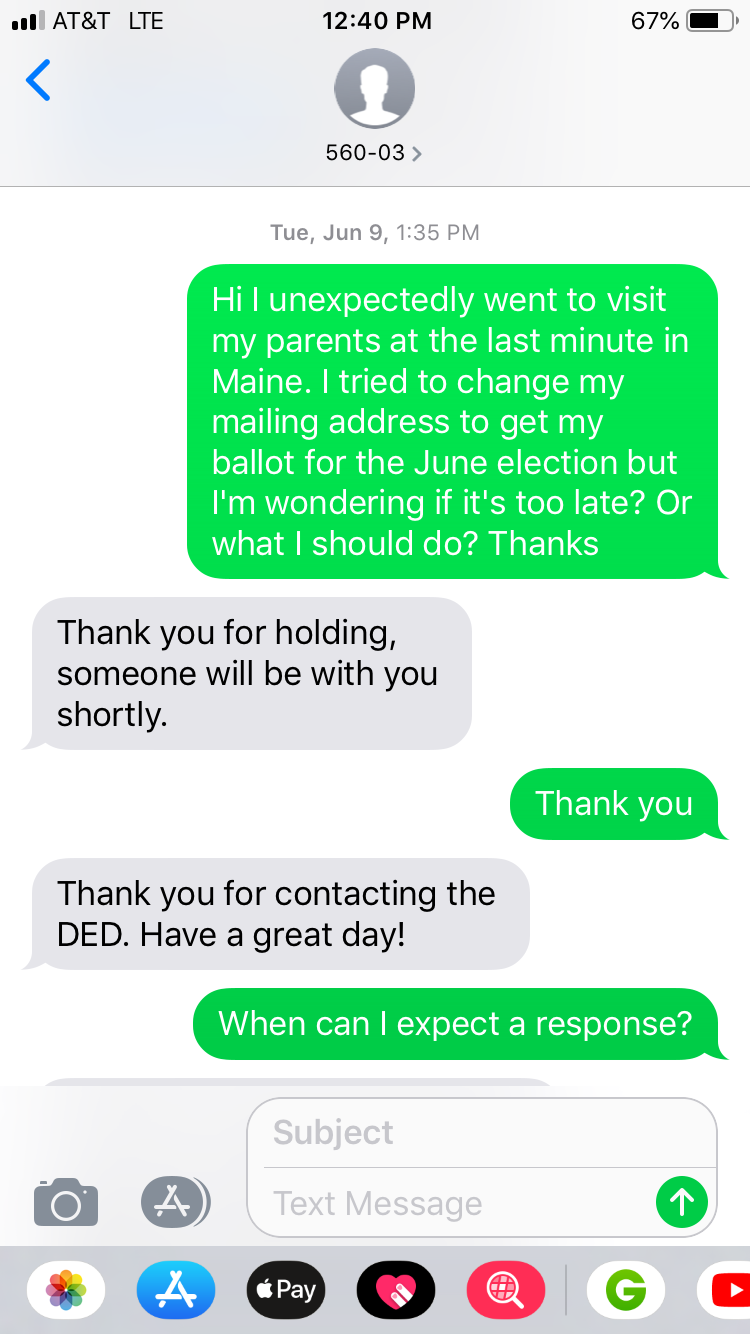
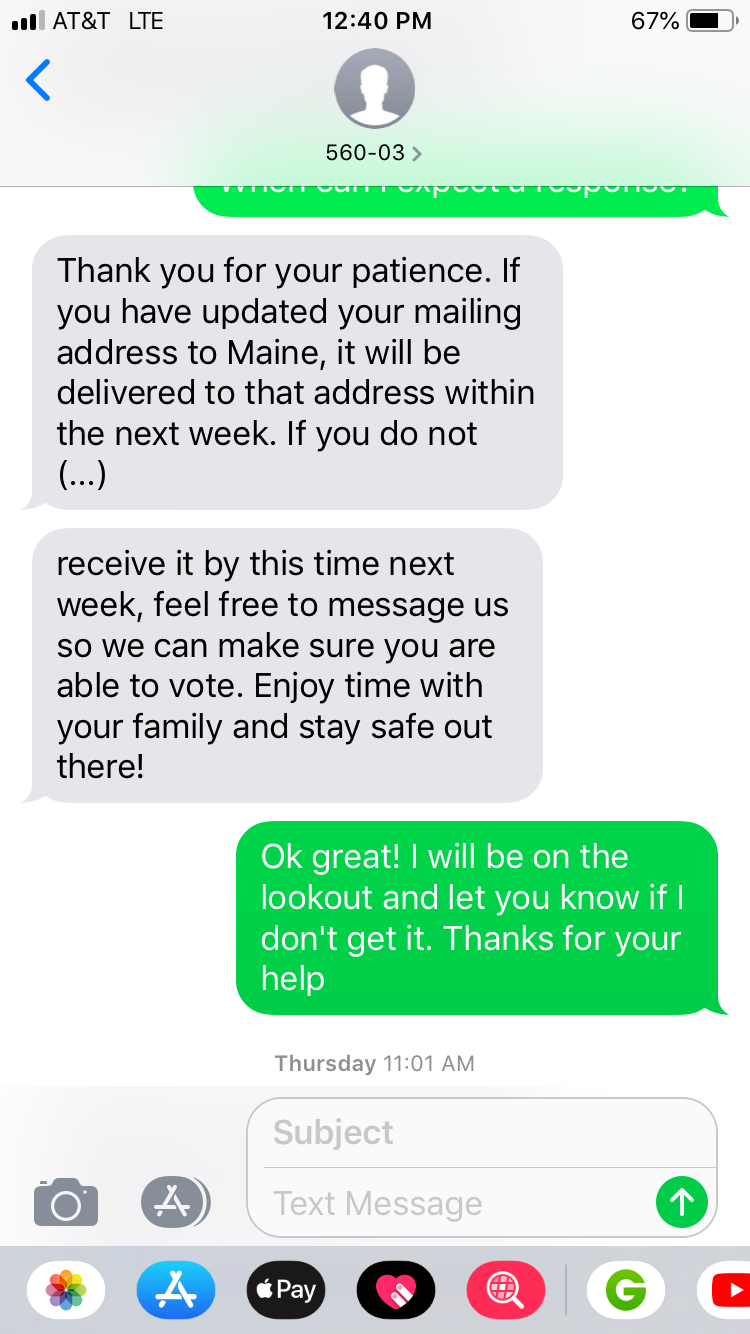
Indeed, my mail-in ballot came in the mail to my mom’s address in Maine the following Monday. In the envelope there were clear, easy-to-understand directions about how to fill out the ballot, options for sending it back, and places you can contact if you have questions. They even include an “I Voted” sticker.
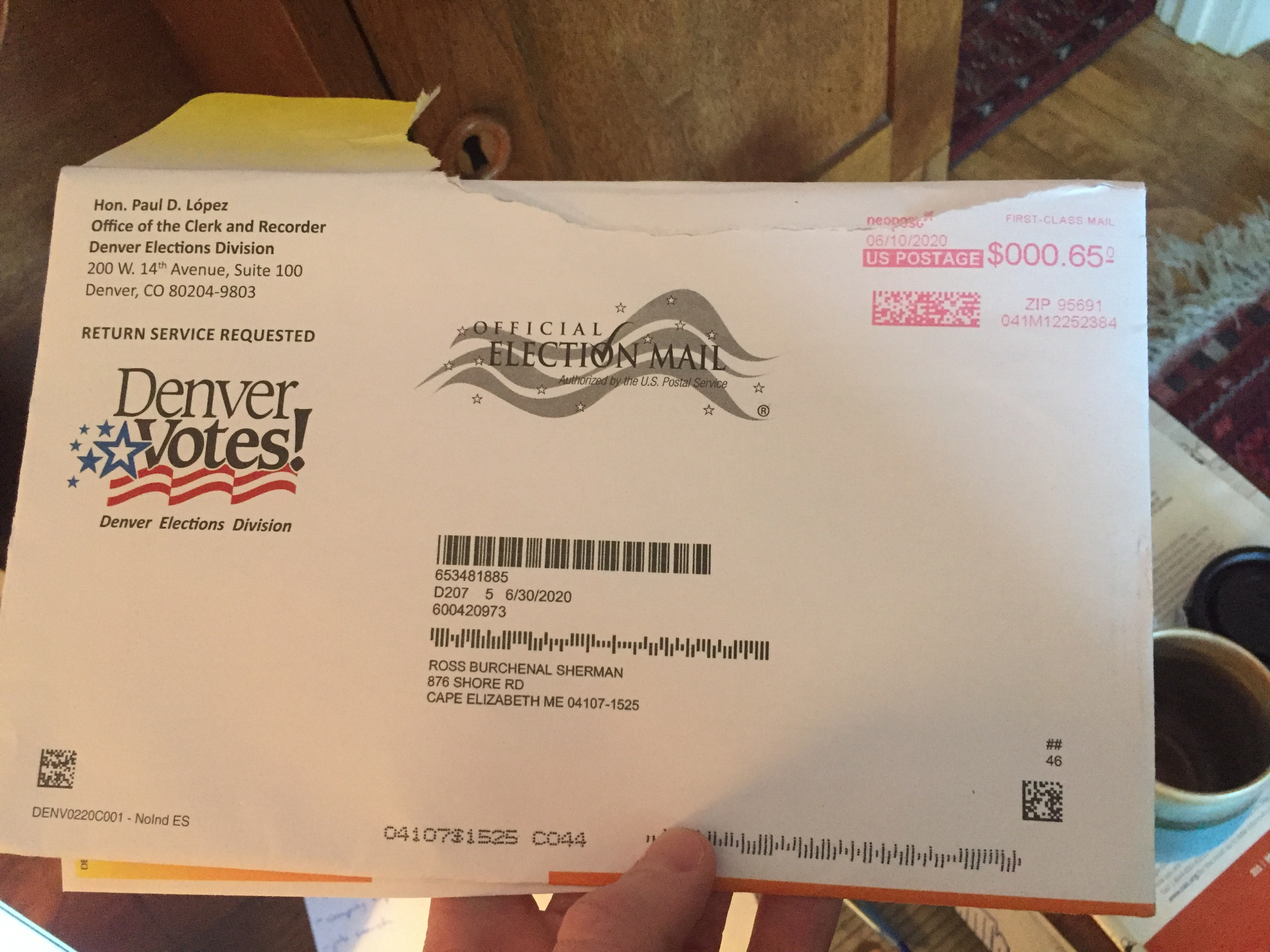
My ballot arrives in the mail. Photo: Ross Sherman.
I did some additional research on the candidates, and then made my selections for U.S. Senate and House, State Senate and House, and State Board of Education. I followed the directions and removed the ballot stub, folded my ballot, put it in the return envelope, signed and dated the voter affidavit on the back, put a stamp on, and then sealed the envelope. It went in the mail on Tuesday (the instructions say to mail it back by June 22 to ensure it’s received by Election Day). I’ll be waiting on a text confirmation that my ballot has been received and counted.
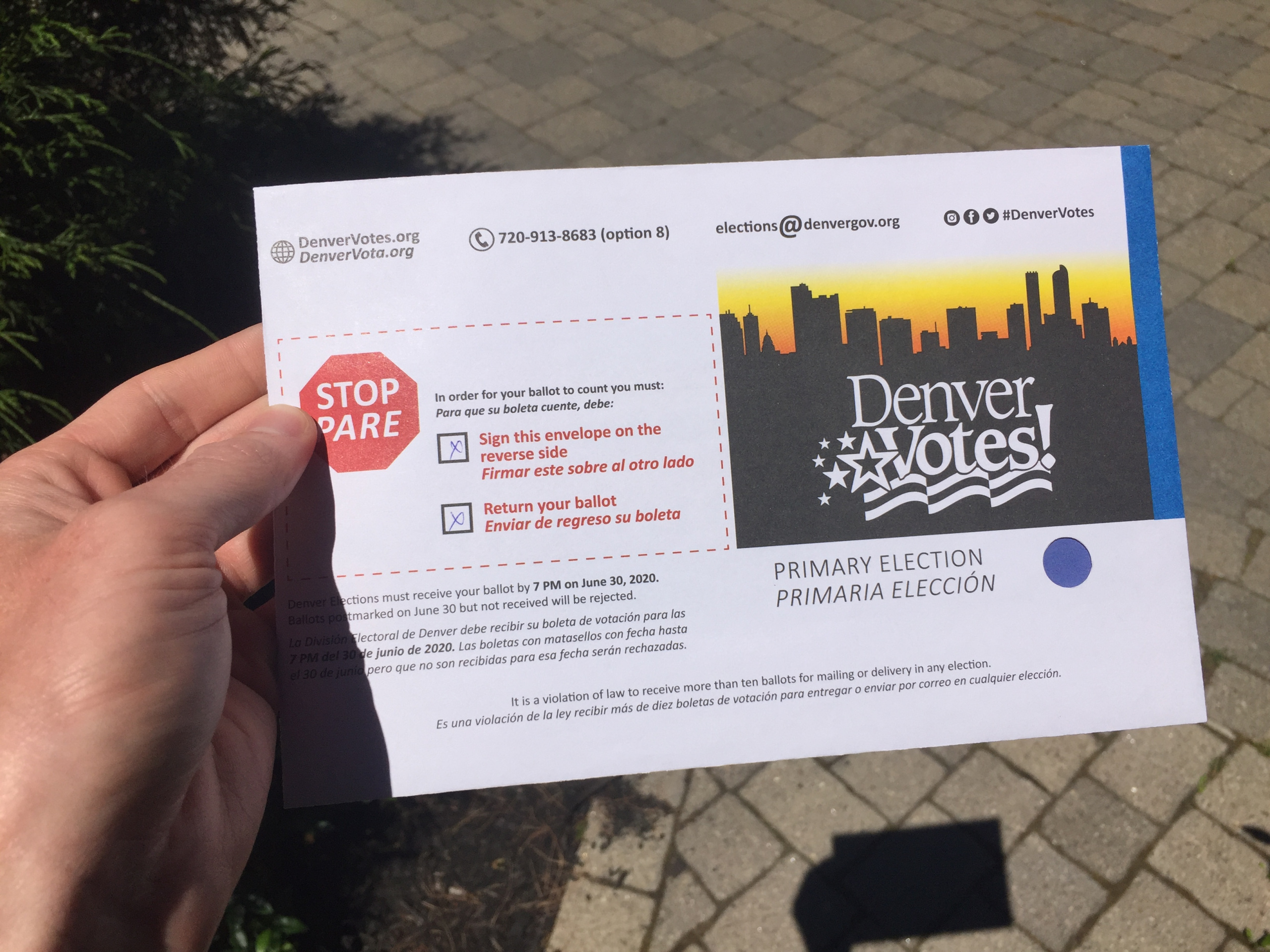
My filled-out, sealed, signed ballot goes into the mail. Photo: Ross Sherman.
By phone, text — and even Instagram — I can’t say enough about the fast and helpful communication from the Denver Election Division.
As more states rapidly ramp up voting by mail in the face of the coronavirus (COVID-19) pandemic, it’s so important that they also invest money and time into making sure there is adequate education and communication with voters so that no one is disenfranchised.
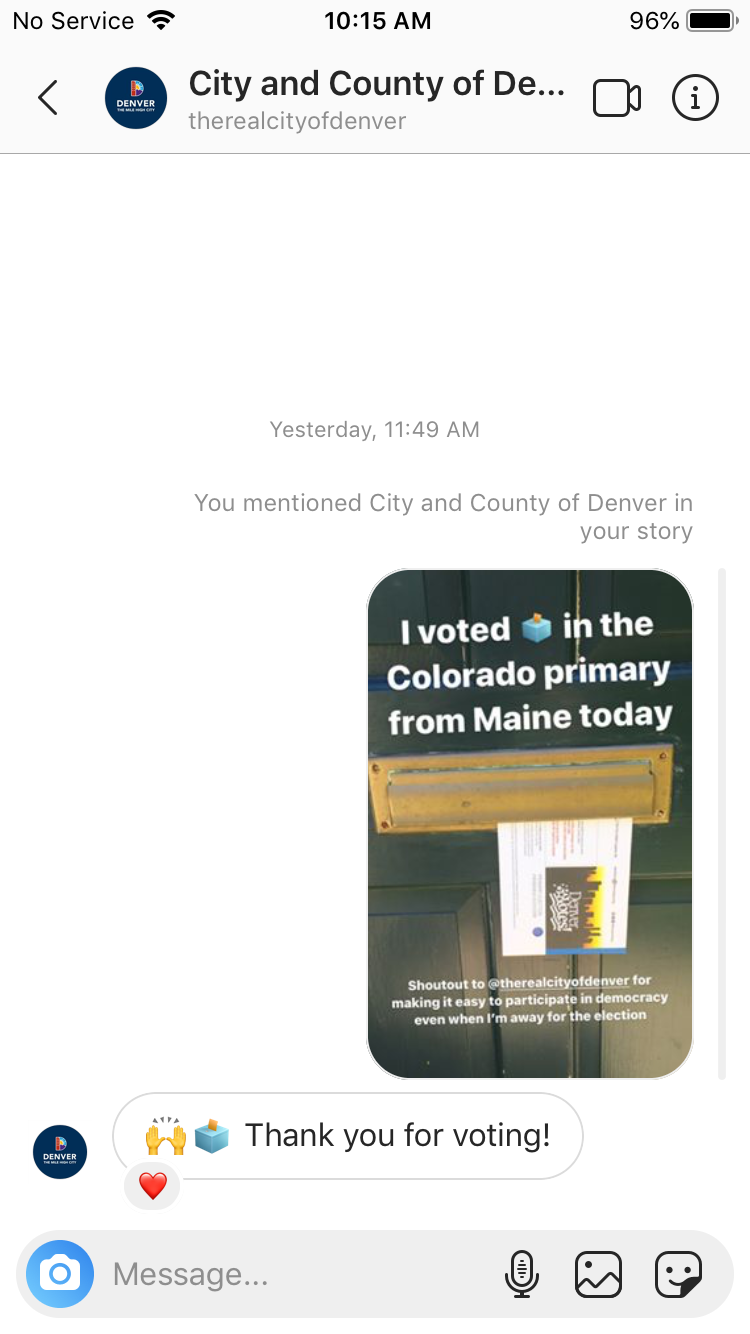
The Denver elections office even responded to my Instagram post! Photo: Ross Sherman.
